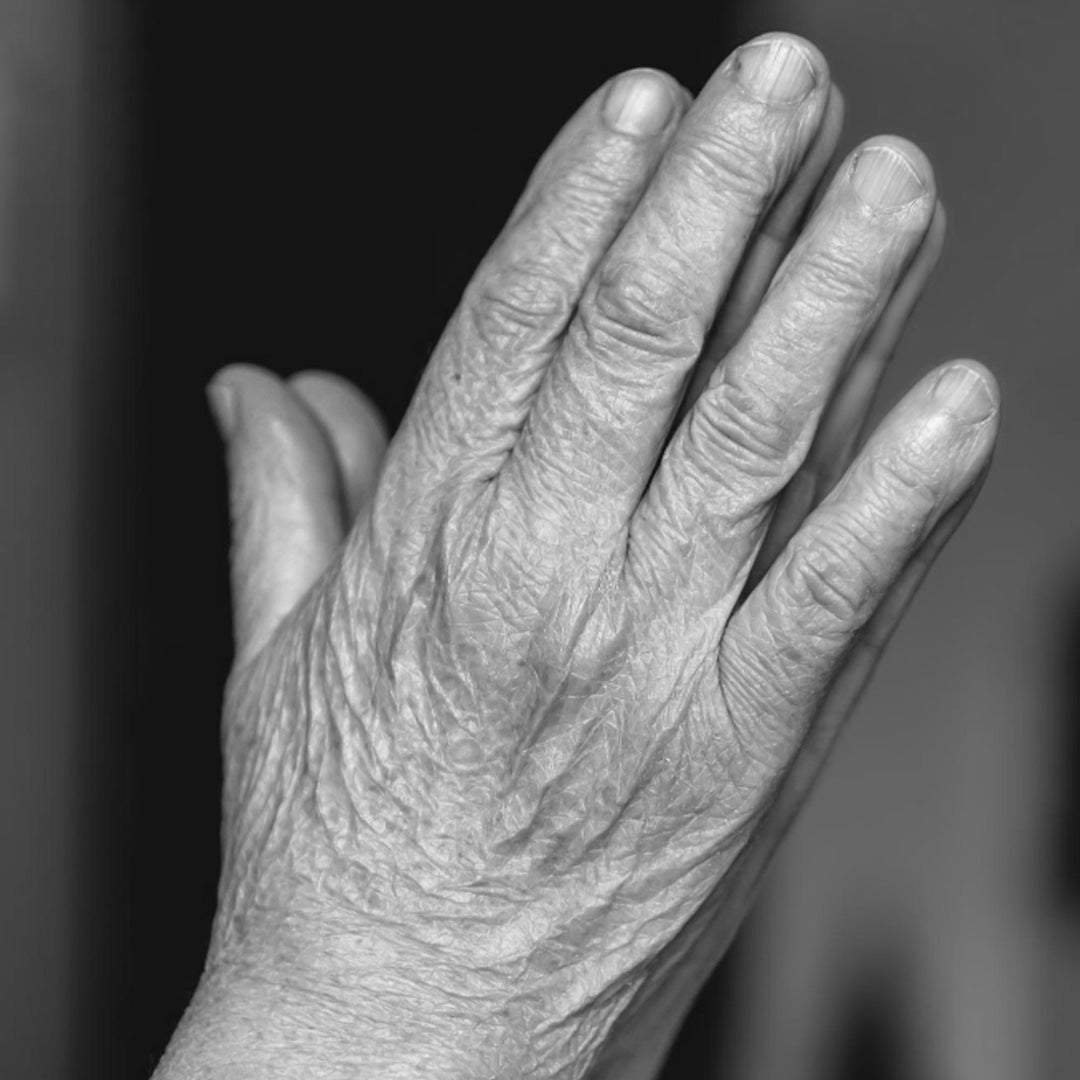

The aging hand.
The age-related loss of volume and / or tension in the muscles and subcutaneous fatty tissue, coupled with a loss of elasticity in the skin, and the changes in volume and shape of the bones make the soft tissue layer larger than its contents.
The young, attractive hand is characterized by a tight soft tissue coat without wrinkles. Depending on the ethnic background, nail polish and jewelry can also underline the overall picture.
The Aging Hand
Age changes in the hand will lead to a combination of:
- Aesthetic Impairment
- Pain
- Functional Impairment
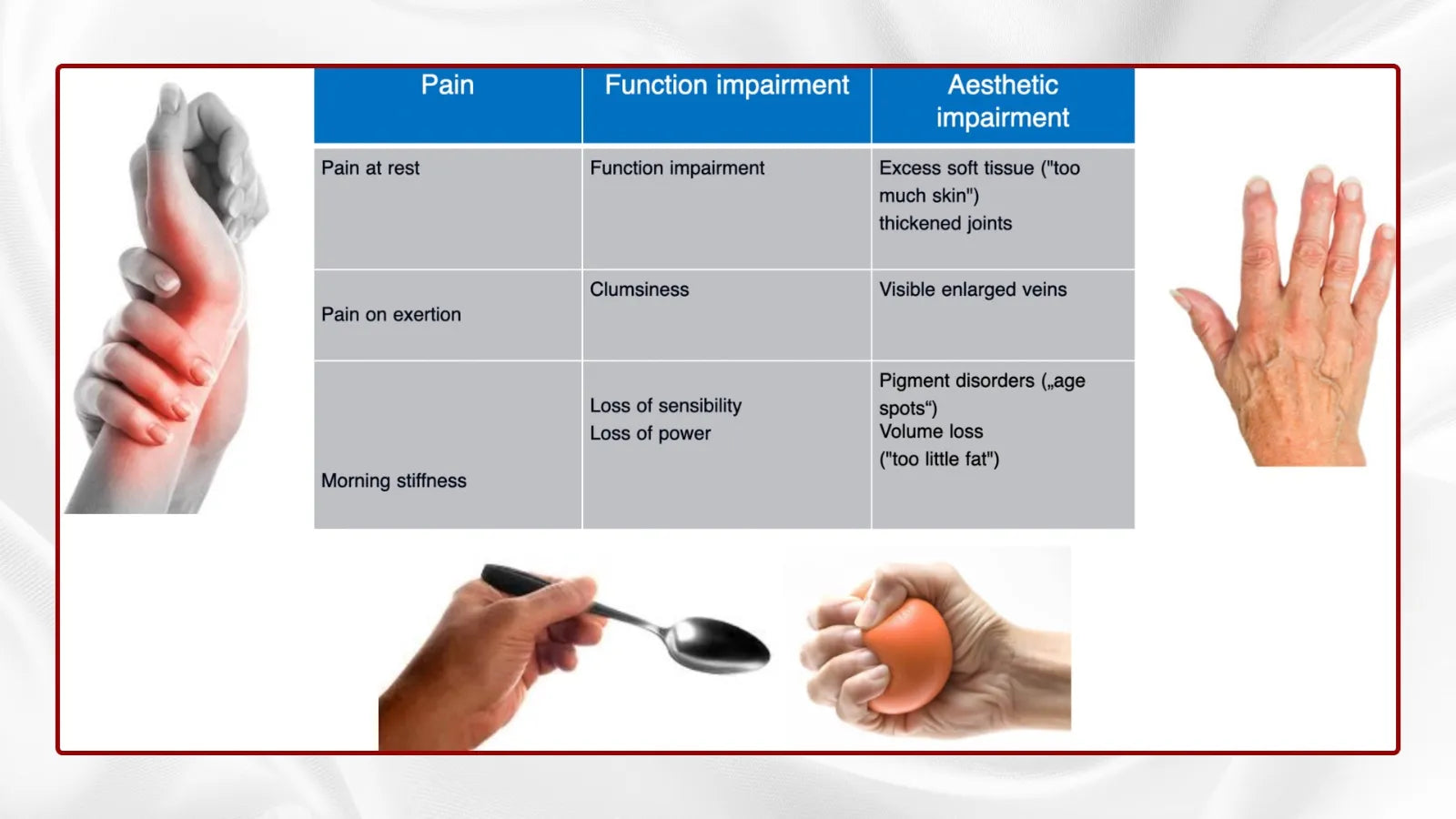
How can age changes in the hand area be treated?
Prof. Dr. Robert Hierner is a pioneer in the field of interdisciplinary and multi-professional treatment of arthrosis in the hand area. Based on many years of research and clinical experience in the field of Hand Surgery, Prof. Hierner has developed the so-called “integrative therapy concept for the aging hand” and successfully implemented it in his daily practice.
Age changes affect everyone and all the tissues in the body; overall, hand ageing is a combination of the following:
- Skin
- Blood Vessels
- Nerves (→ Carpal tunnel syndrome)
- Tendons (→ Trigger Finger)
- Joints (→ Osteoarthritis)
- Bones (→ Osteporosis)
All of the above symptoms can be treated to a great extent under our Hand Rejuvenation in Dubai therapy program by our specialist, Prof Dr Robert Hierner.

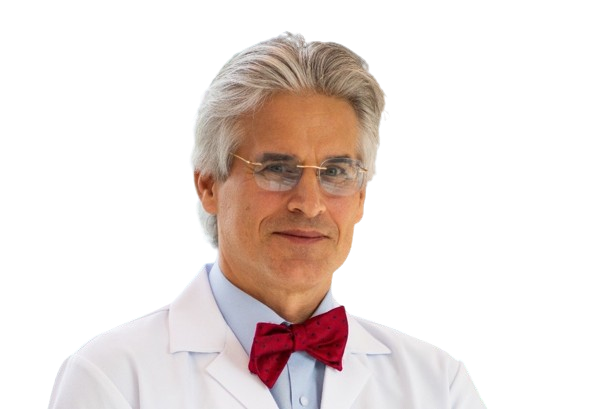
Ask the Expert: Hand Aging & Hand Longevity.
Discover the secrets to radiant, youthful skin with personalized guidance from our face and neck treatment expert. Ask the expert today and let us help you look and feel your best!
Skin Changes
Skin Changes (Wrinkles)
There are major age-related changes at the skin and nail level:
- Pigment disorders: Because of increased melanocytic activity, so-called “age spots” appear at the dorsum of the hand.
- Wrinkles: Collagen loss causes loss of thickness of dermis and wrinkles to appear. When you are younger, protein-based fibres are more readily available. It is, however, possible to lose collagen too soon.
- Loss of contour: Because of loss of thickness of dermis and loss of subcutaneous fat tissue, there is loss of contour of the hand and
- Increasing visibility of dorsal veins and tendons
- Nail disorders: discoloration and thickening of the nail plate are the most common features

Skin & Nail – “Integrative Therapy Concept for the aging hand”
Prof. Hierner is a pioneer in the field of hand wrinkle therapy. Based on many years of research and clinical experience in the field of hand surgery, we have developed and successfully implemented a so-called →”integrative therapy concept for the aging hand” in our daily practice.
The goal of treatment is to change appearance while maintaining function. With regard to age changes of the skin, the “integrative therapy concept for the aging hand” includes:
- Avoiding or delaying the formation of wrinkles
- Therapy of existing wrinkles
Avoiding or delaying the formation of wrinkles
The best therapy for age-related wrinkles is to avoid them (excessive exposure to the sun, smoking, alcohol) and delay them (cosmetic treatment).
From the age of 30, the moisture content of the skin decreases. Small superficial wrinkles appear. The aim of professional cosmetic treatments is to replace the loss of moisture in the skin (“rehydration”). A consistently carried out moisture therapy of the skin with suitable products allows the early age changes – superficial wrinkling – of the skin to become visible later. Deeper wrinkles cannot be removed with cosmetic treatments
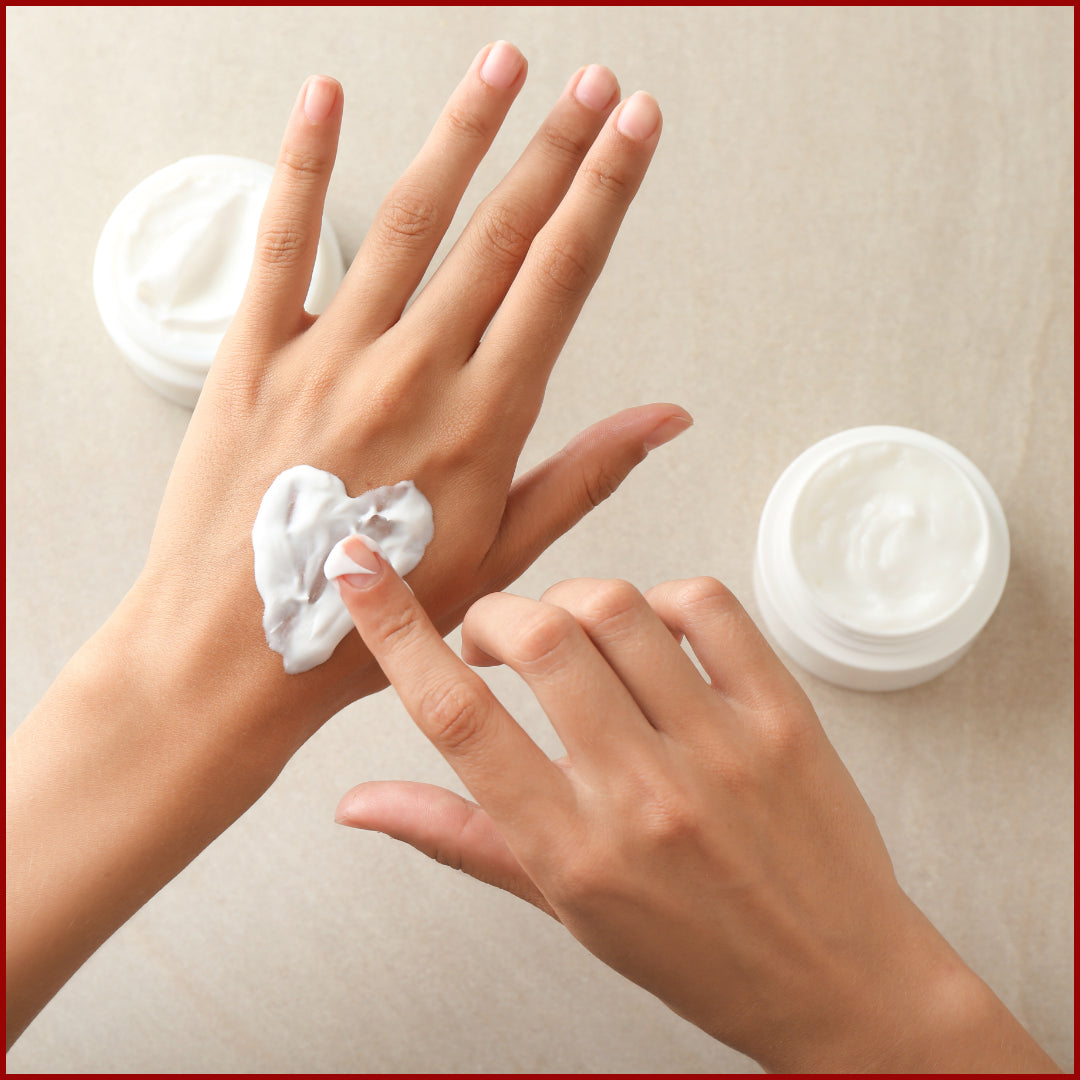
Therapy existing wrinkles
For the treatment of existing age-related changes in the hand area, depending on the cause(s), several therapy methods are combined with each other and sometimes used in a way that builds on each other. A distinction is made between:
- Conservative and minimally invasive treatment of age changes in the skin area
- Surgical therapy of age changes in the skin area
It is important to understand that the conservative, minimally invasive and surgical treatment options are not competing procedures, but rather complementary forms of treatment.
The key for a successful treatment is a profound analysis of the different age changes of the skin at the hand and wrist:
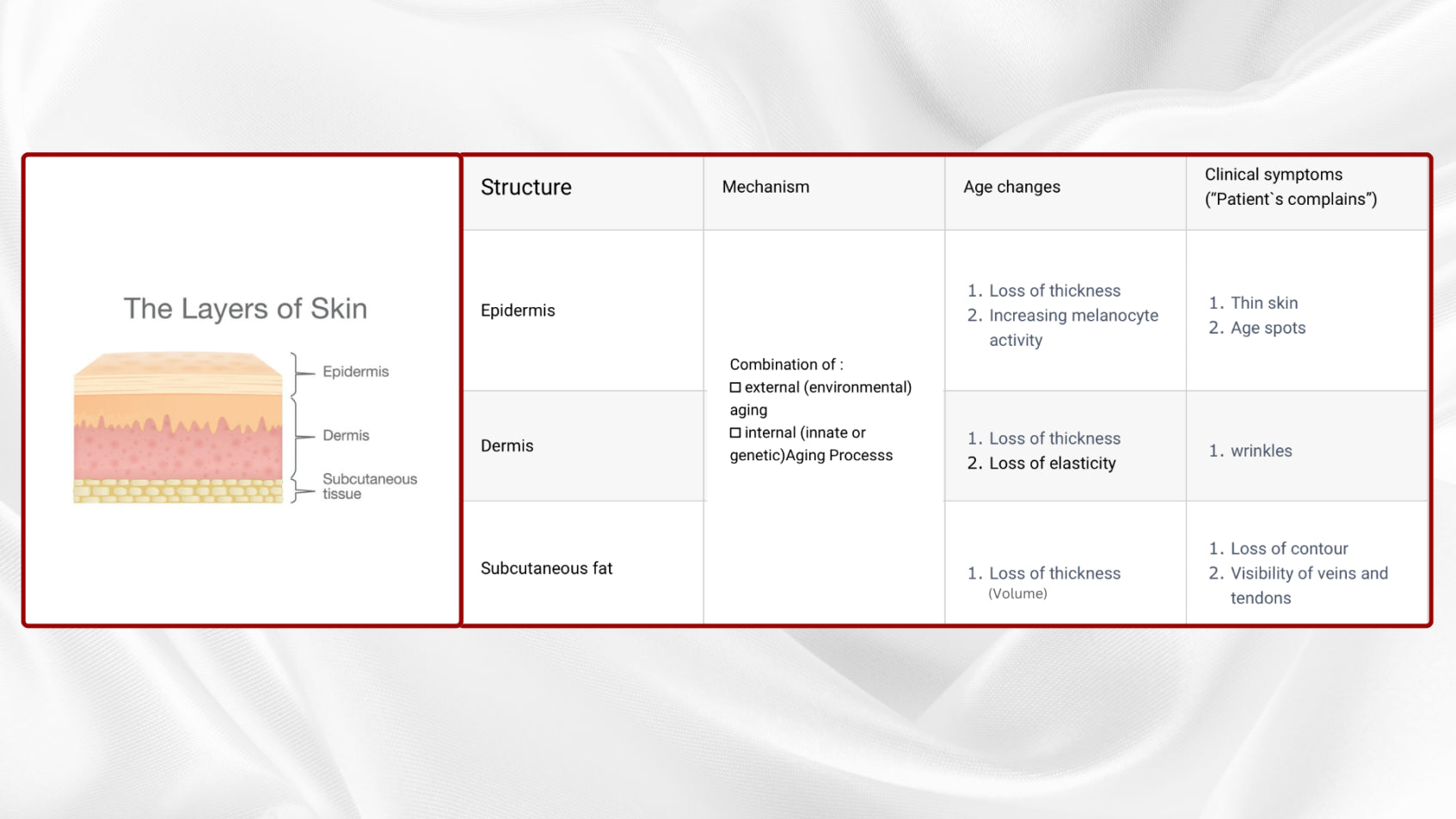
Conservative and minimally invasive therapy of age changes in the skin area
With the help of numerous conservative and minimally invasive treatment methods, a significant reduction in age-related skin changes in the hand area can be achieved without surgery. The different methods have different main treatment goals.
The various techniques can be used alone or in combination with other conservative, minimally invasive and surgical treatment methods.
Conservative and minimally invasive methods include:
- Skin peeling
- Mesotherapy: (→ mesotherapy for wrinkle treatment in the hand area)
- LASER
- Filler: (→ hyaluronic acid for wrinkle treatment in the hand area)
- Autologous fat injection (lipofilling): (→ autologous fat injection in the hand area for wrinkle therapy in the hand area)
- Sclerotherapy of dorsal hand veins
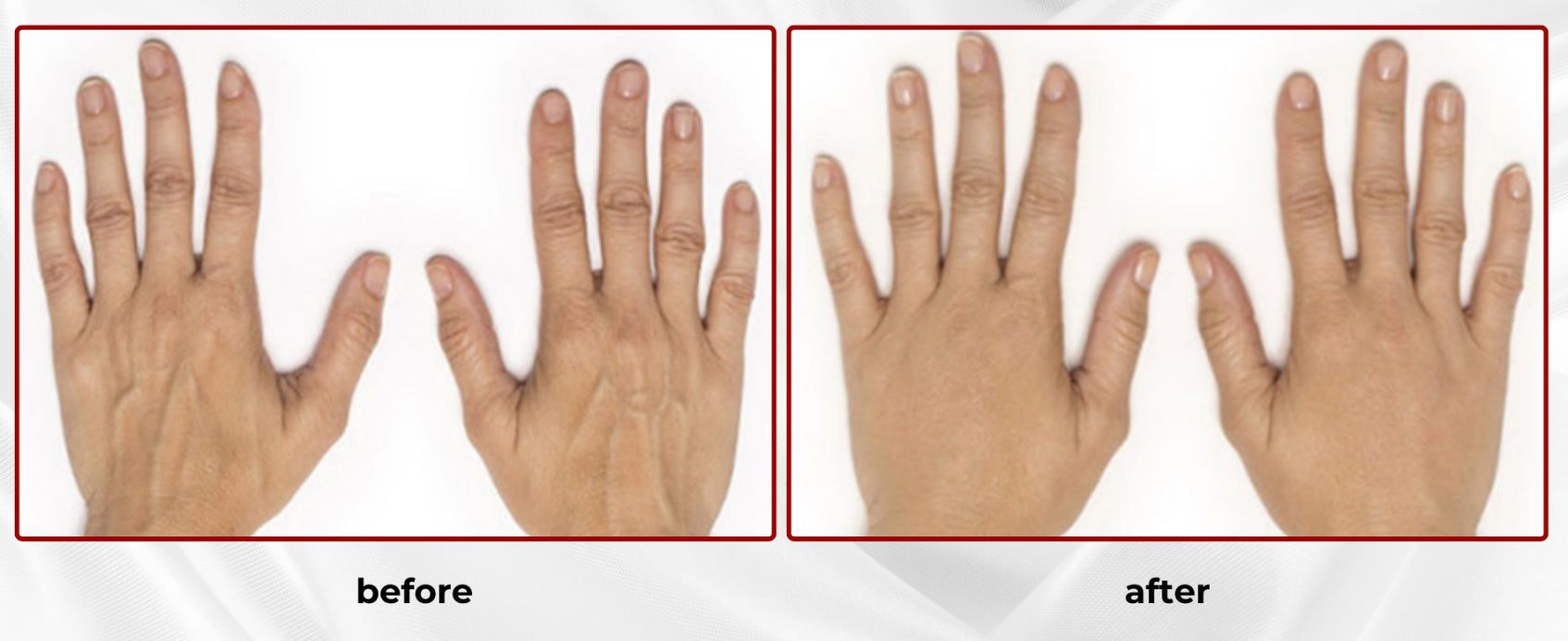
Surgical therapy of age changes in the skin area
With the help of lifting operations, age-related changes in the hand area that can no longer be corrected with conservative and/or minimally invasive treatment methods can be reliably treated.
The various techniques can be used individually or in combination, individually adapted to the needs of the patient. It is also possible to combine these interventions with all other non-surgical (conservative and minimally invasive) wrinkle therapy options.
- Tightening operation in the hand area (“hand lifting”)

Tendon Changes
Tendon changes (stenosing tenosynovitis, trigger finger)
Years of friction of the flexor tendons at the entrance to the finger tendon sheath leads to a thickening of the tendon.
Due to the thickening of the tendon, the finger tendon no longer slides through the tendon sheaths. Finger movement is impaired (pain) or even blocked (snapping or triggering).This process is also known as stenosing tenosynovitis.
Besides aging, the thickening of the tendon is mostly due to external factors, such as:
- Trauma
- Rheumatic diseases
With “trigger Finger”, when you bend your fingers or thumb, they catch or lock, causing pain. Trigger finger is one of the most common hand surgical conditions leading to a significant incapacity for daily life and work. It can happen to more than one finger at the same time. It’s known as trigger thumb when it affects your thumb. Another very common location is the radial (thumb side) wrist. It can occur in both hands.
In the elderly a trigger finger occurs in more than 50% of patients.
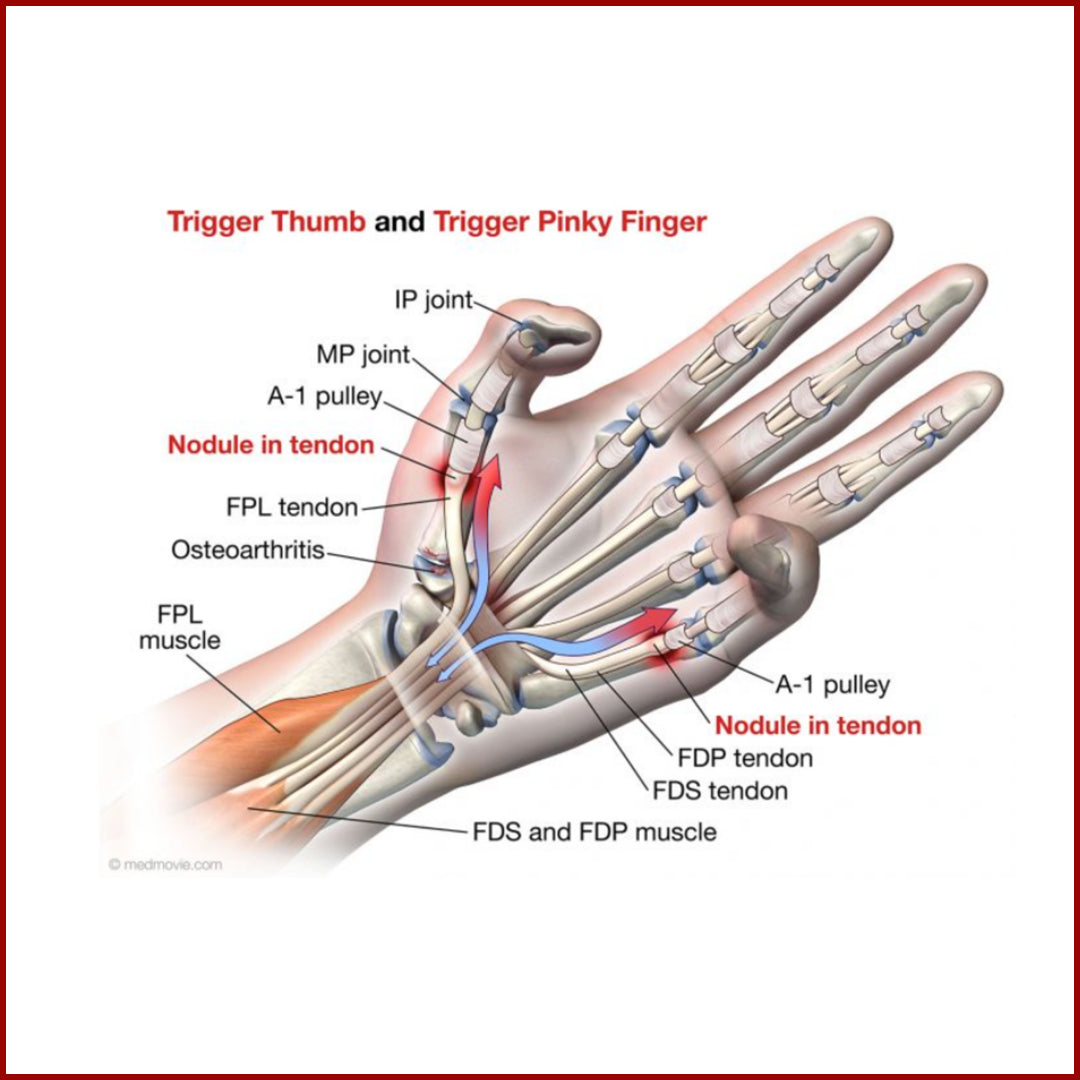
“Integrative Therapy Concept for the aging hand” – Tendon
The goal of treatment is to relieve the pain and restore normal grip function. With regard to age changes of the tendons, the “integrative therapy concept for the aging hand” includes:
- Prevention and Awareness
- Conservative Treatment/ Treatment of first onset of symptoms
- Surgical Treatment/ Treatment of recurrence of symptoms
Prevention and Awareness
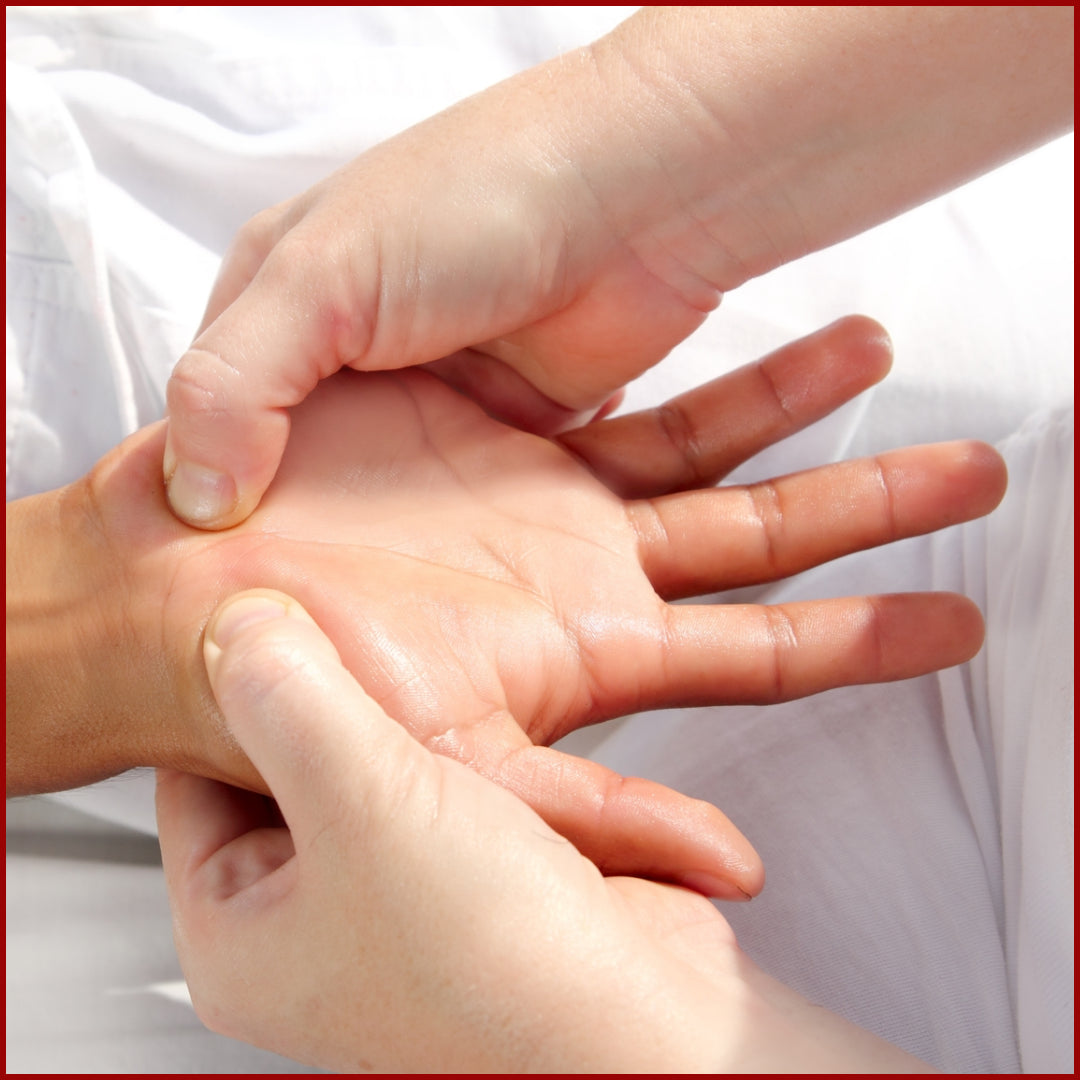
Conservative Treatment /Treatment of first onset of symptoms
If a snapping finger occurs for the first time, a non-surgical treatments can be used successfully. Treatment options are
- physiotherapy
- oral anti-inflammatory treatment
- cortisone injection: Frst choice of treatment. The success of the treatment can only be assessed after a few days:
- If the symptoms disappear completely and do not return, no further therapy is necessary
If the symptoms do not disappear completely or reappear within a few weeks, a surgical approach is necessary.

Surgical Treatment/Treatment of recurrence of symptoms
If non-operative treatment does not lead to full recovery or symptoms persist for a longer period of time, surgery is the treatment of choice.
The principle is to release the entrance of the flexor tendon sheath (A1 pulley). Release is achieved via a mini-incision.
Adequate postoperative pain therapy must be ensured. Medications (e.g. Arcoxia 90 mg 1-0-0, …) should be taken already 1 day before surgery. Postoperatively, the hand should be moved immediately. Physiotherapeutic follow-up should be started early. A large bandage or even immobilization on a splint is not necessary. Suture removal is performed 10 – 14 days after surgery. After suture removal, scar massage with Vaseline 3-5x/day for 4 – 6 weeks is recommended.
Patients with a desk job are able to work for 1 – 3 days and manual workers for 2 – 3 weeks.
The trigger symptom must be completely removed directly after surgery.
NOTE: The A1 annular ligament release is the most common hand surgical procedure worldwide.
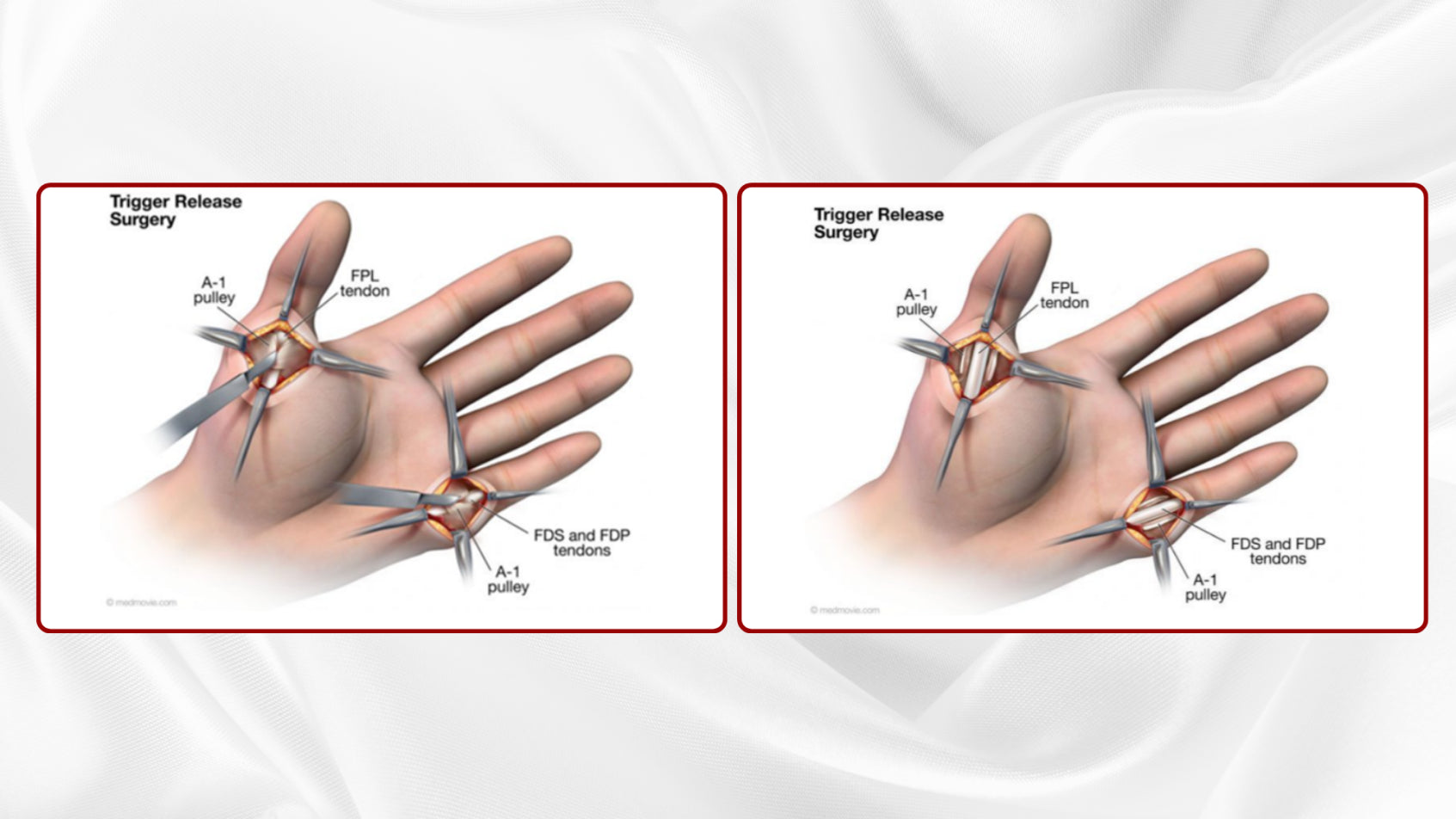
Nerve changes
Nerve changes (chronic nerve compression Syndromes)
An age-related increase in the volume of the flexor vagina and reduced gliding ability of the large peripheral nerves in the area of anatomical constrictions (Carpal Tunnel, Gyuon’s Loge, Cubital Tunnel) leads to chronic pressure damage to the affected nerve.
Additional increases in volume can be caused by pregnancy, numerous metabolic diseases (diabetes mellitus), dialysis and/or rheumatic diseases (e.g. chronic polyarthritis).
Tingling and numbness in the fingers and hands are common symptoms. Dryness of the skin in the fingers is also a possibility. Besides, the skin in the painful area may appear discoloured, pinker or redder than usual or appear blue or mottled in some instances. Increasing clumbsiness is an other frequent symptom.
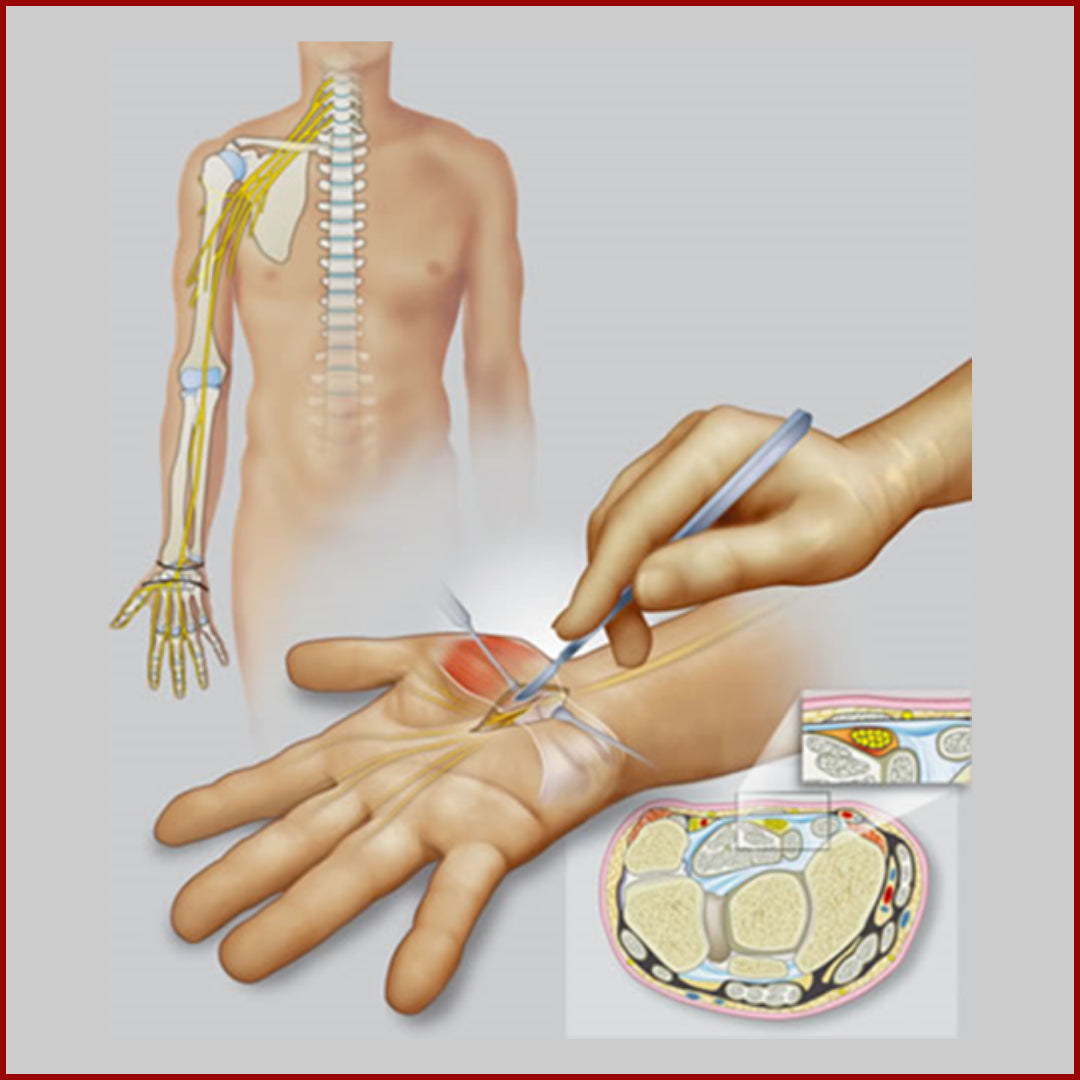
The Carpal tunnel syndrome
The Carpal tunnel syndrome is the most common peripheral nerve entrapment syndrome. The syndrome usually occurs on both sides, with more than 50% requiring treatment.
The compression syndromes mainly occur as chronic lesions. The resulting functional disturbance depends on the extent and duration of the constriction. It can range from slight discomfort(“hands go to sleep”)to slight motor weakness(increasing clumsiness)to complete (sensorimotor) paralysis.Nighttime painsare also typical, waking the patient up and causing him to shake his hands or let them hang down from the bed.
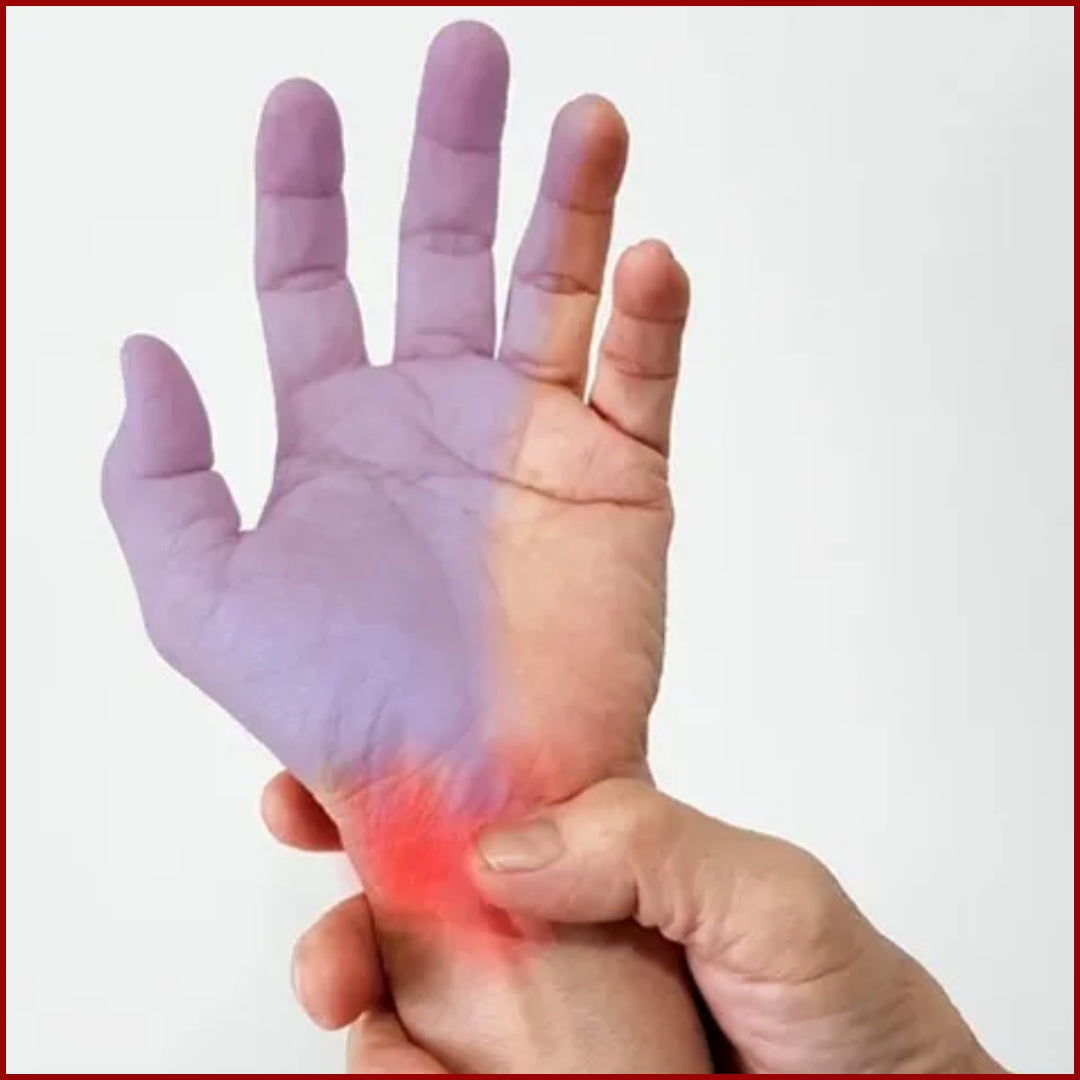
“Integrative Therapy Concept for the aging hand” – Nerves
The goal of treatment is to relieve the pain and restore normal sensibility and grip function. With regard to age changes of the nerves, the “integrative therapy concept for the aging hand” includes:
- Prevention and Awareness
- Conservative (non-operative) treatment
- Operative treatment
Prevention and Awareness
The best therapy for age-related carpal tunnel is to avoid it (wear and tear due to repetive motions, excessive strain, lack of exercise, poor diet, …).
Vitamin B complex is a necessary component for the development of peripheral nerves. Deficiency leads tothe increased susceptibility of nerves to chronic pressure.

Conservative (non-operative) treatment
There are several methods available for the treatment of carpal tunnel syndrome in its early stages:
- Night splinting
- Cortisone injection into the carpal tunnel
- Physiotherapy (to unload the carpal tunnel)
- Anti-inflammatory treatment
- Correction of water balance (dialysis patients)
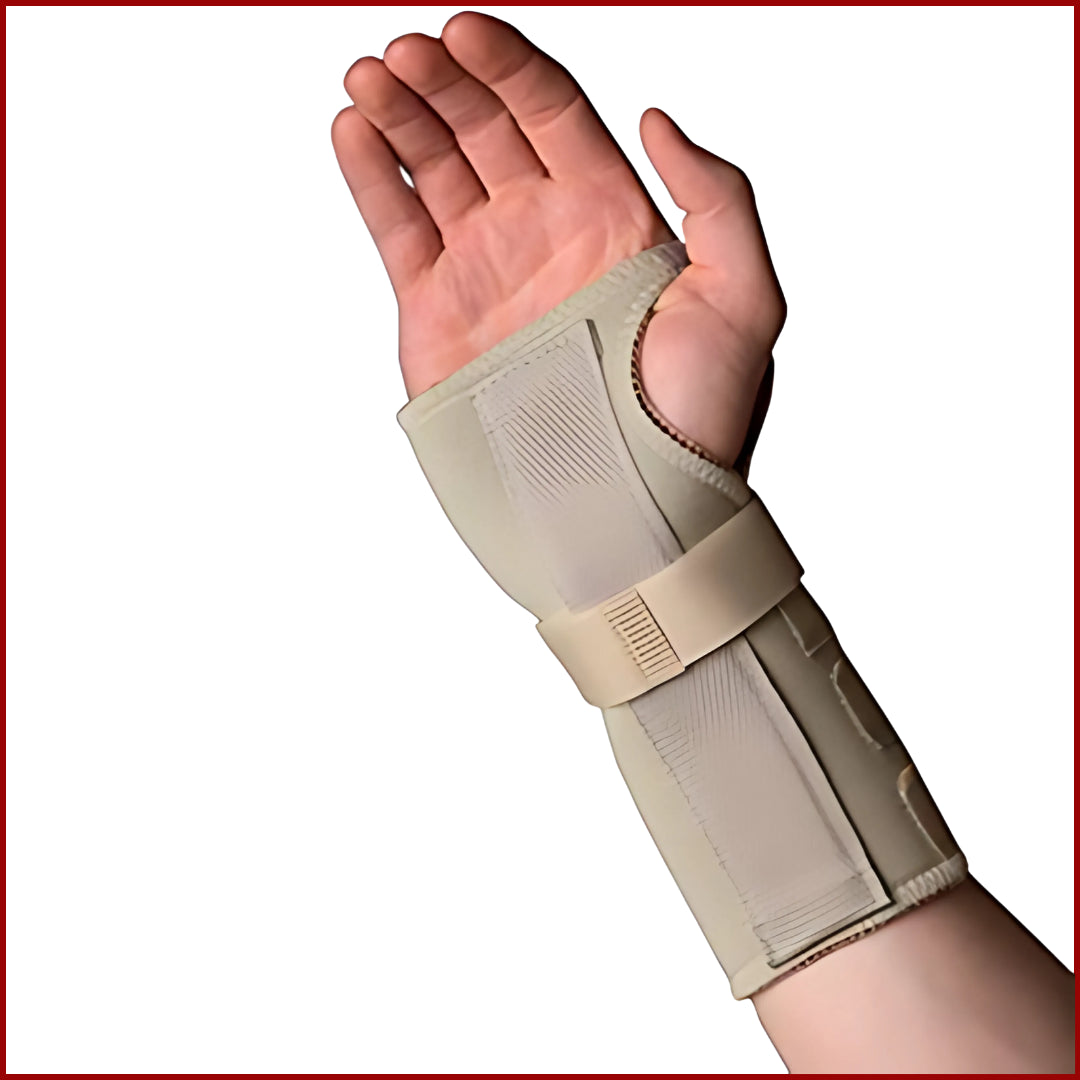
Operative treatment
If the therapy is unsuccessful and symptoms persist, the indication for surgical carpal tunnelrelease should be made early and generously. Atrophy of the thenar muscles cannot be regenerated.
Relief of the carpal canal can be achieved either via a mini-incision or endoscopically.
Adequate postoperative pain therapy must be ensured. Medications (e.g. Arcoxia 90 mg 1-0-0, …) should be taken already 1 day before surgery. Postoperatively, the hand should be moved immediately. Physiotherapeutic follow-up should be started early. A large bandage or even immobilization on a splint is not necessary. Suture removal is performed 10 – 14 days after surgery. After suture removal, scar massage with Vaseline 3-5x/day for 4 – 6 weeks is recommended.
Patients with a desk job are able to work for 1 – 3 days and manual workers for 2 – 3 weeks.
Nocturnal pain should persist immediately after surgery. Pre-existing sensory disturbances disappear – depending on the severity and duration – only after 3 – 12 months.
NOTE: Carpal tunnel release is the second most common hand surgical procedure worldwide.
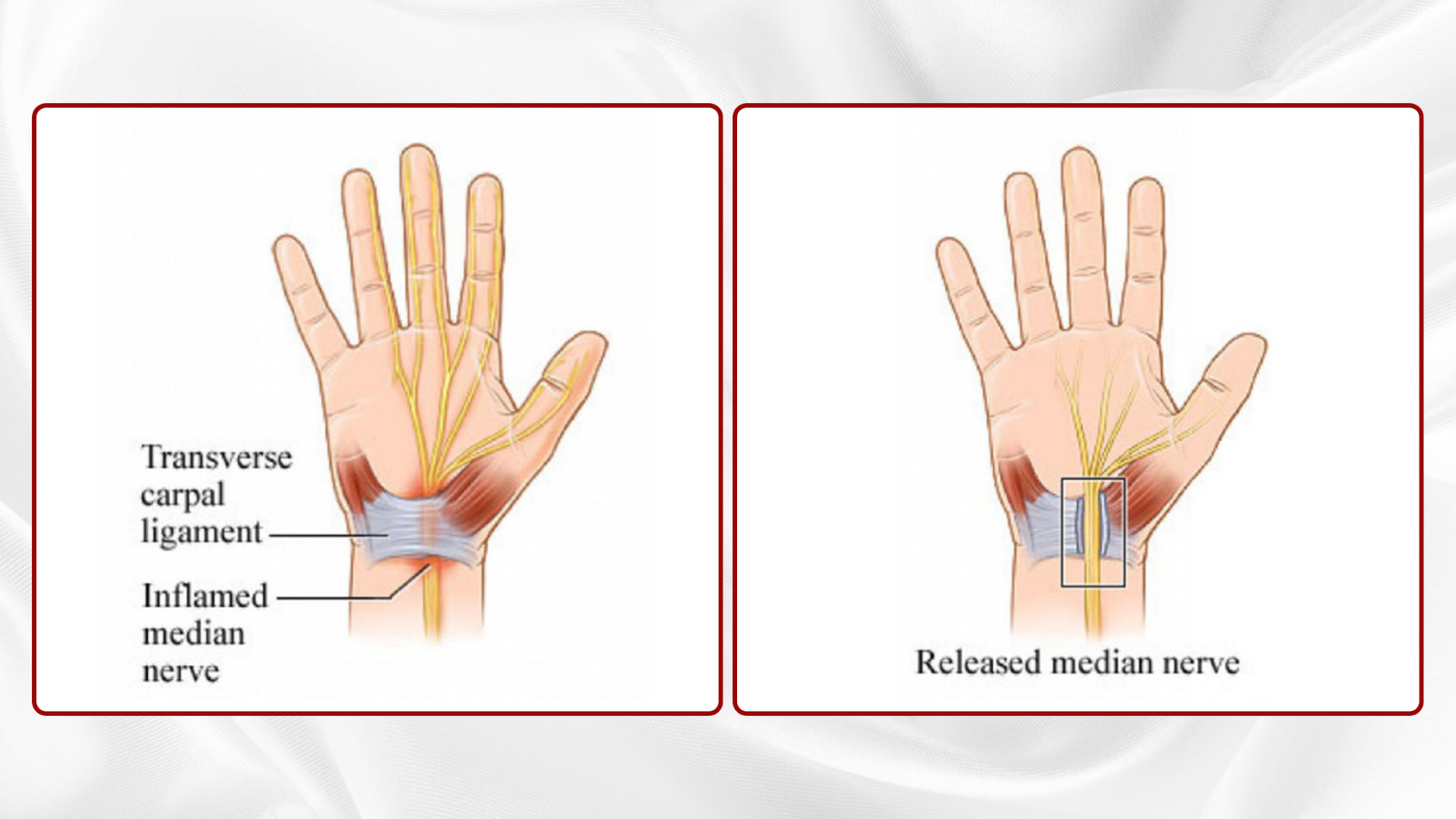
Bone changes
Bone changes (Osteoporosis)
Bone is living tissue that is constantly being broken down (Bone Resorption) and replaced (Bone formation).
With the hormonal changes at menopause (women) and adrenopause (men), bone resorption become more prominent.
How likely you are to develop osteoporosis depends partly on how much bone mass you attained in your youth. Peak bone mass is partly inherited and varies also by ethnic group. The higher your peak bone mass, the more bone you have “in the bank” and the less likely you are to develop osteoporosis as you age.
There is a typical stages of osteoporosis:
- Loss of bone mineral content
- Reduction of cancellous bone structures
- Reduction of cortical bone structures
Osteoporosis is a disease that weakens bones to the point where they break easily — most often, at the wrist (distal radius fracture), the hip, and the spine
Osteoporosis is called a “silent disease” because you may not notice any changes until a bone breaks. All the while, though, your bones had been losing strength for many years
Note: The wrist (distal radius fracture) is the most common fracture in human
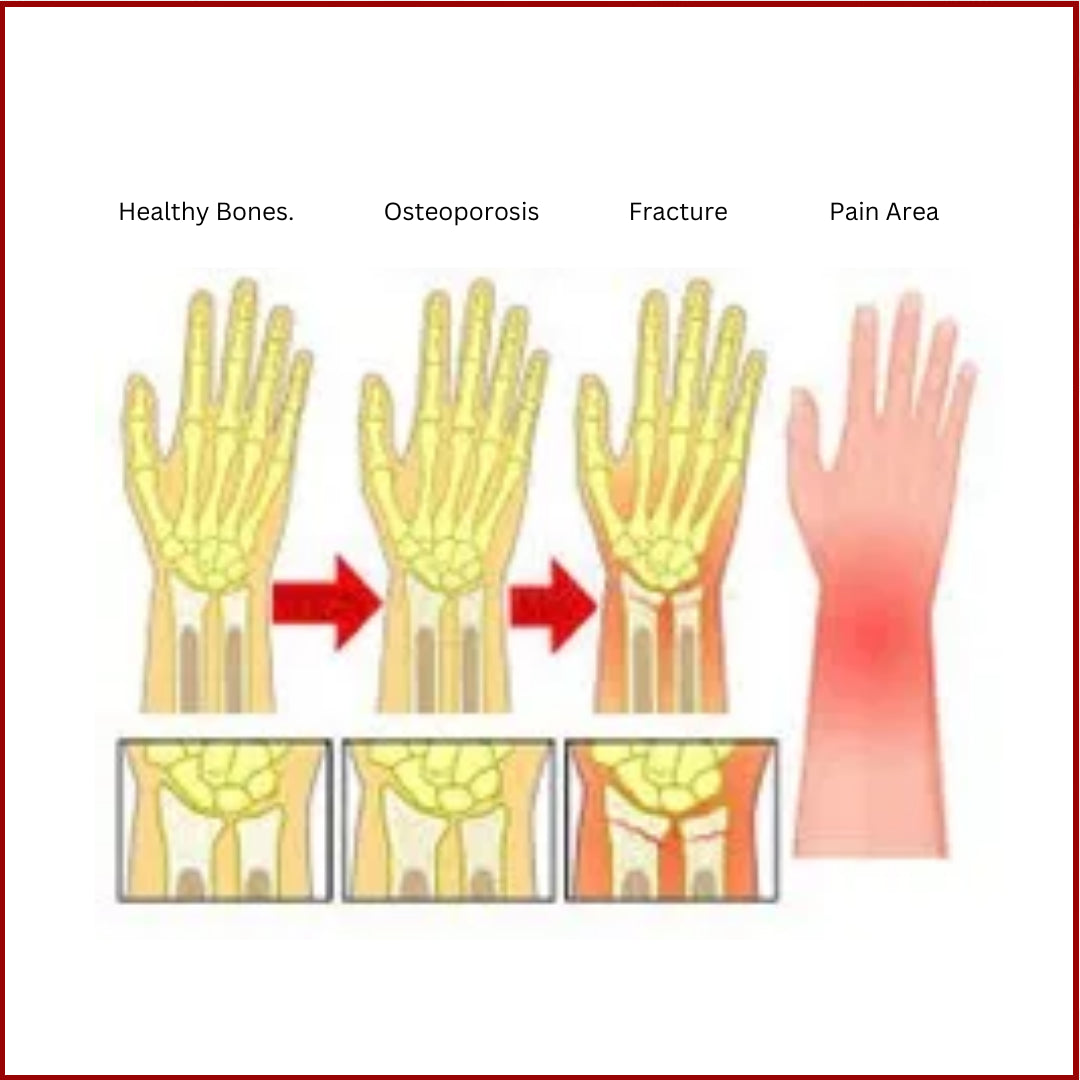
“Integrative therapy concept for the aging hand” – Bone
The goal of treatment is to avoid or slow down the loss of bone substance, and therefore prevent fractures.
Treatment recommendations are often based on an estimate of your risk of breaking a bone in the next 10 years using information such as the bone density test. In order to increase awareness of osteoporosis a bone density test should be done in every woman > 50 years and every man > 60 years.
There are several treatment lines, such as:
- Prevention and Awareness
- Conservative (non-operative)
- Operative treatment
Prevention and Awareness
Osteoporosis affects men and women of all races. But white and Asian women, especially older women who are past menopause, are at highest risk.
There are several risk factors:
- Inherent risks (unchangeable):
- External risks (changeable)
- Lifestyle (no sports, alcohol, tabacco)
- Hormonal changes: sexual (oestrogen, testosterone), thyroid (Hyperthyreosis), parathyreoid, adrenal (cortison)
- Dietary factors (low Calcium intake, low Vitamin D levels, eating disorders, bariatric surgery, …
- Steroids
- General health (inflammatory bowl disease, rheumatoid arthritis, cancer, kidney diseases, liver diseases,….)
and other medications.
The best therapy for osteoporosis is to prevent or delay it by:
- Healthy diet (Calcium, Vitamin D)
- Weight-bearing exercise
- Bone density screening should be considered more often.
Conservative (non-operative) treatment
Medication is indicated for men and women at increased fracture risk. There are several drugs with different actions on the bone. An appointment at a special Osteoporosis clinic (Rheumatology, Orthropedics) is highly recommended.
There are different systemic treatment options, such as:
- Bisphosphonates
- Denosumab
- Hormone-related therapy
- Bone-building medications
Operative treatment
Surgical fracture treatment follows the same rules as for adults. Due to the great importance of the additional stiffening of the joints and general damage caused by immobilization, the indication for surgical fracture treatment in older people is generous.
Joint changes
Joint changes (Osteoarthritis in the Hand area)
Osteoarthritis is the typical wear and tear of the joints and a natural consequence of our aging process.
The aging process of the joints is a combination of external (heavy work, …..) aging and the internal (genetic, hormonal changes, …) aging process.
Key symptoms of joint aging in the hand area are a combination of
- Pain
- Functional impairment
- aesthetic impairment
In almost 70% of the over 65 year olds, signs of arthrosis can be detected in the x-ray. These do not necessarily have to lead to complaints. However, half of all 60-year-olds complain about the typical arthrosis symptoms.
Thumb
The metatarsophalangeal joint often shows age-related joint changes (rhizarthrosis), which lead to typical swelling, misalignment, (stress) pain and functional restrictions (“wringing out a cloth” becomes painful).
Finger
The finger end joints (Bouchard arthrosis) and finger middle joints (Heberden arthrosis) often show age-related joint changes, which lead to typical swelling (“rings no longer fit”), malpositions, (stress) pain and functional restrictions.
As arthrosis progresses, joint movements become permanently painful – especially under stress – the joint may crunch and/or the mobility of the joint may be restricted. In the last stage of joint wear and tear, the joints also hurt at rest, which, among other things, can make restful sleep impossible.
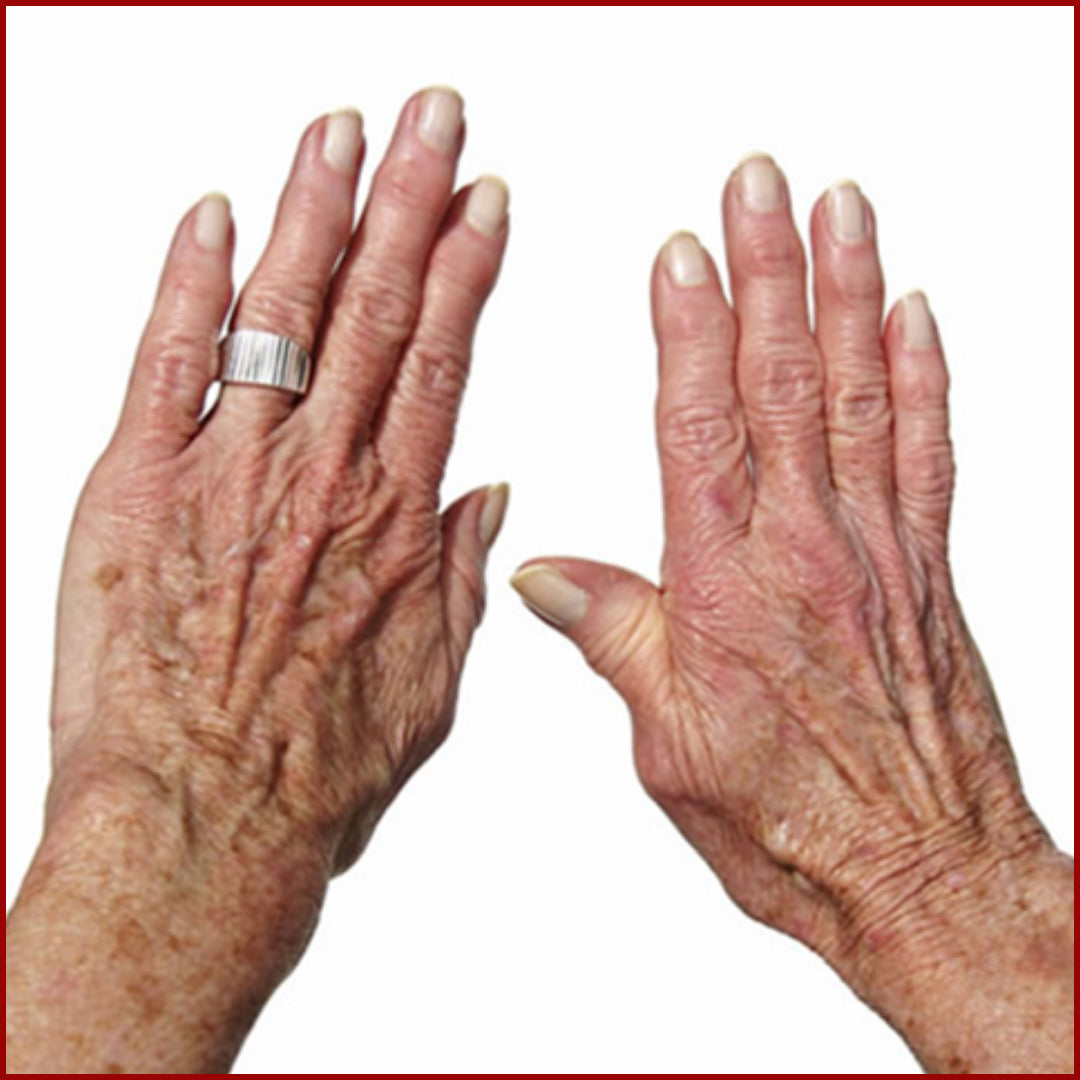
“Integrative therapy concept for the aging hand” – Joints
The goal of treatment is to relieve the pain, restore normal grip function and improve the aesthetic appearance of the hand. The “integrative therapy concept for the aging hand” includes with regard to osteoarthritis treatment:
- Avoiding or delaying the change in joints (“he who rests, rusts”)
- Therapy of existing joint changes
Avoiding or delaying the change in joints (“he who rests, rusts”)
The best therapy for age-related joint (arthrosis) complaints is to avoid them or delay them (wear and tear from overuse, lack of exercise, poor nutrition, ..).
From the age of 50, the cartilage thickness in various finger joints decreases significantly. Women show arthritic changes in the hand area much earlier than men, due to hormonal changes at the menopause.
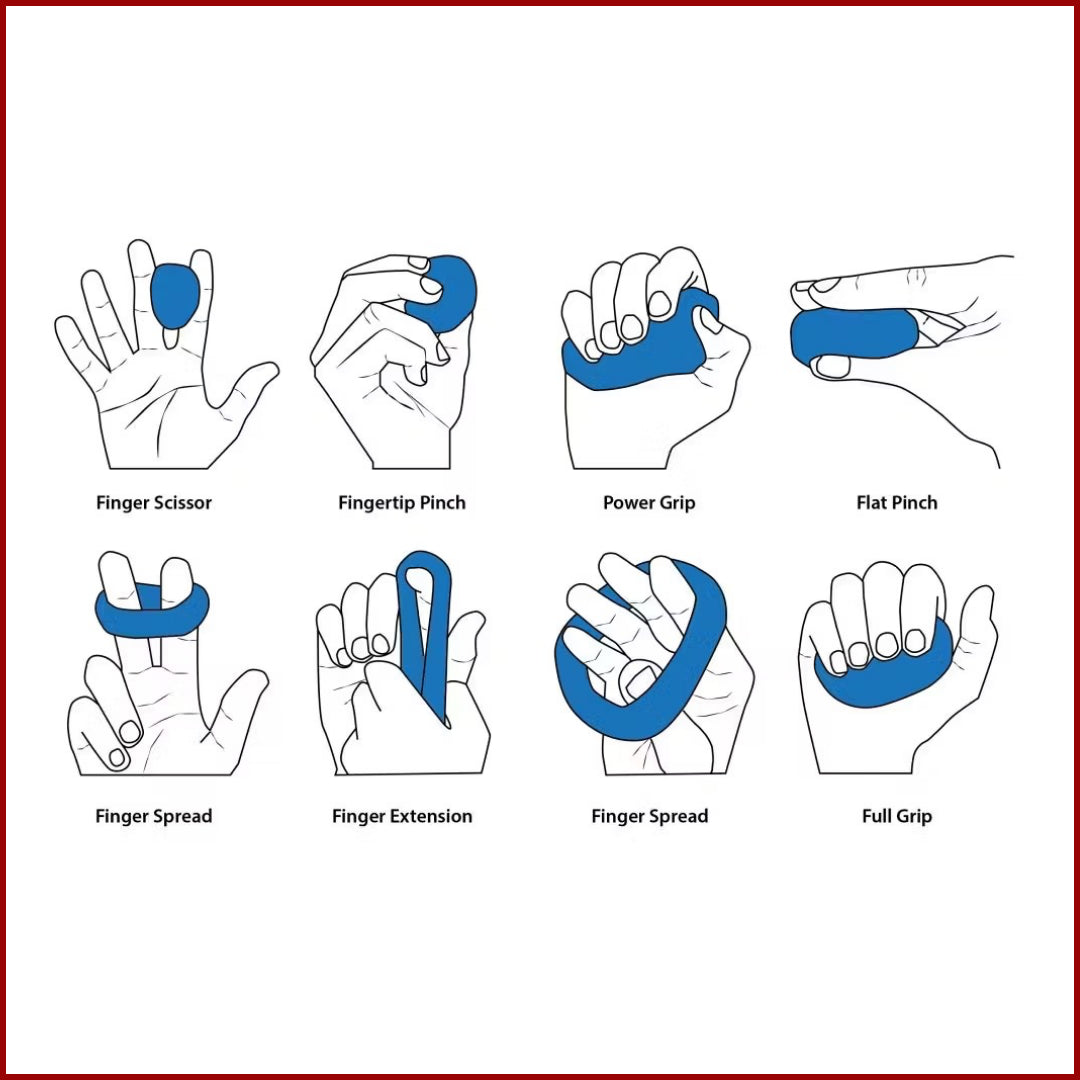
Therapy of existing joint changes
For the treatment of existing age-related changes in the joint area of the hand – depending on the cause(s) – several therapy methods are combined with each other and sometimes used in a way that builds on each other. A distinction is made between:
- Conservative (non-surgical) and minimal-invasive Therapy
- Surgical treatment
Note: It is important to understand that the conservative, minimally invasive and surgical treatment options are not competing procedures, but rather complementary forms of treatment
Conservative (non-surgical) and minimal invasive Therapy
With the help of numerous conservative and minimally invasive treatment methods, a significant reduction in age-related skin changes in the hand area can be achieved without surgery. The different methods have different main treatment goals.
The various techniques can be used alone or in combination with other conservative, minimally invasive and surgical treatment methods.
- Physiotherapy:
Physiotherapy is the basis of every joint treatment. It includes joint strengthening and joint restorative exercises. Some exercises include
- Wrist extension and flexion
- Thumb extension and flexion
The hand specialist will ask you to involve in activities that frequently use fingers such as typing, knitting, and playing hand videogames. etc.
- Complementary medical treatments (homeopathy, traditional Chinese Medicine, ….)
Due to arthritis, carpal tunnel syndrome or morning stiffness of hands, the finger joints lock and resist movement. Some homoeopathic medications can help relieve symptoms of osteoarthritis in hands and fingers
- Intra-articular hyaluronic acid injection for arthrosis therapy (→ hyaluronic acid for arthrosis therapy in the hand area)
When the above approaches are insufficient in pain management, the hand specialist can also recommend Intra-articular hyaluronic acid for pain management of joint pain, crocked fingers, trigger fingers or arthritis
- Periarticular injections (PRP, Fat/Stem cells)
- Medical Leech therapy
It is a part of integrated therapy for hands, in which the blood-sucking leeches are applied to one the problematic part of the hands joint (monoarticular pain). While sucking blood, they also secrete saliva that helps with osteoarthritis management
- Low-dose Radiotherapy (→ Low-dose Radiotherapy for Hand Conditions)
External arthrosis radiotherapy is used for treating advanced arthritis. It is applied to various joint parts, including the joint nodes in hands and fingers (oligoarticular or polyarticular pain) . As per the therapy, a radioactive fluid is directly injected into the joints, which destroys the inflamed cartilage and collagen, relieving pain symptoms
- Systemic Pain management (WHO ladder)
Surgical treatment
Surgical therapy becomes necessary if conservative treatments are not (or no longer) successful.
Note: The thumb is operated on earlier than the fingers.
Depending on the location and severity, various surgical procedures are used:
- Exostosis removal in Heberden arthrosis
- Arthroplasty (Link→Resection-Suspension Arthroplasty of the CMC I Joint according to EATON-LITTLER)
Arthroplasty is a surgical procedure to restore joint mobility. The joints are resurfaced and repaired through arthroscopy to reduce joint friction and inflammation.
Joint Fusion/Arthrodesis
It is performed to remedy advanced joint deterioration at the proximal interpalangeal (PIP) joint and the distal interphalangeal (DIP) joint
Total joint replacement
It is a rare surgical procedure in non-rheumatoid patients to replace the interphalangeal joints in the fingers.




